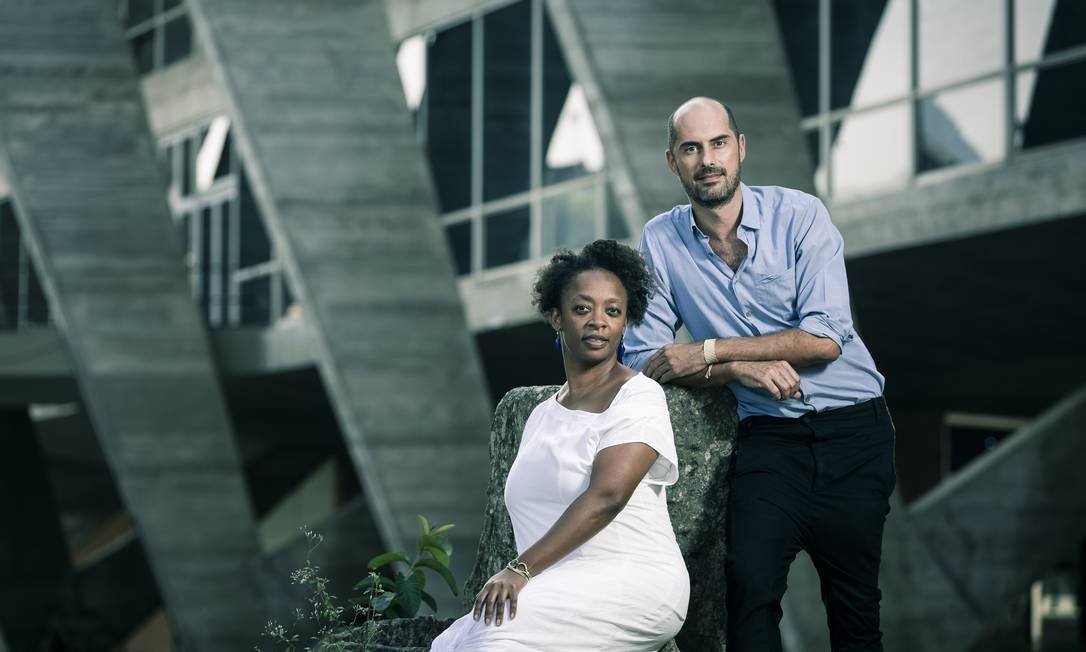RIO DE JANEIRO, BRAZIL – The Museum of Modern Art in Rio de Janeiro (MAM Rio) has just appointed an artistic direction in line with the current times when feminism, anti-racism, and transparency are invigorated.
It is a two-headed and diverse direction comprised of curators Keyna Eleison, a 41-year-old black Rio de Janeiro native, and Pablo Lafuente, a 44-year-old white Spaniard. The joint project introduced by the two cultural managers, long-time friends, was selected from among hundreds of proposals submitted to the public tender called in full pandemic for the position, as announced Tuesday by the MAM.
“Our proposal is to use this diversity, to work all aspects (of artistic direction) as a duo,” explains Lafuente from Rio. In the words of co-director Eleison, “a duo curatorship offers more insights into each issue. Developing projects collectively strengthens the work, as the room for doubt is filled with the act of listening.”

The MAM was built 70 years ago, in the wake of New York’s MoMA, on the shores of Guanabara Bay. Dedicated to the avant-garde, to experimentation in the arts, cinema, and culture, throughout its history it has experienced dramatic ups and downs, including a great fire in the seventies that destroyed virtually its entire collection.
With 15,000 pieces, it holds one of the largest film archives in Brazil and one of the largest collections of modern and contemporary art in Latin America. Now it faces a new resurrection in the hands of the new executive director, Fabio Szwarcwald, and the newly elected artistic direction. Closed because of the pandemic, this private museum is expected to reopen its doors on September 12th.
As soon as they heard about the tender, Eleison and Lafuente decided they would run for the position and do it together. They intend to carry out all the duties of the post as a pair. “The culture of museums in Brazil is very white. Our proposal was to work together, designing the exhibitions, negotiating with the artists, monitoring the projects…” says Lafuente, who has lived in Brazil since arriving to direct – together with four other professionals – the 2014 São Paulo Biennial.
The combination of their perspectives is one of the assets they offer: “Our different experiences make the structure more intelligent. We are not just a duo who complement each other, but a set of experiences, perceptions, and knowledge that transcends the sum of Keyna and Pablo,” she points out, an academic and veteran Brazilian cultural manager.
Together, they aspire to “provide a reconfiguration of the museum.” They want to open the three brutalist architecture blocks that house the headquarters towards the park designed by landscaper Roberto Burle Max – partner of Oscar Niemeyer in a multitude of projects – and connect them to the view of the stunning bay, openning them to all audiences in one of the most unequal cities of a country as diverse as Brazil.
All it takes is to broaden a little the focus of the city tourist visits to find impoverished neighborhoods with tremendous needs. Lafuente emphasizes that the duo aims to promote culture for everyone, but points out that “you can’t just tell them ‘It’s open’ and expect them to come. We intend to create specific programs for each group.” To this end, they intend to use the experience they share in the field of cultural education.
The project also includes a closer dialogue between the various disciplines that make up the MAM. “May the film library feed the exhibitions, may they feed the research and may the research feed the school”, says the Basque curator. These are the ingredients with which the duo of curators aims to give new life to the museum, financed by Petrobras and Itaú among others, which last year was forced to auction off a Jackson Pollock work to tackle the financial crisis.
Source: El País

